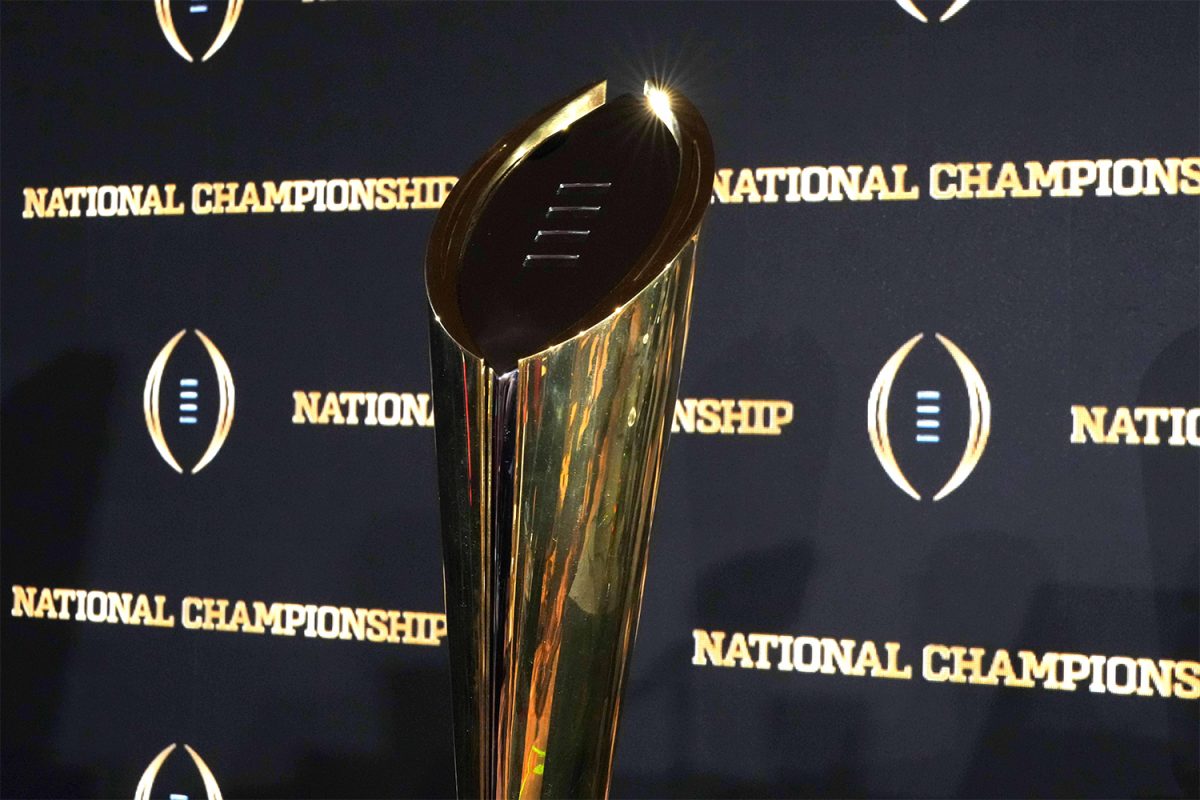This season, the College Football Playoff, or CFP, expanded from four teams to 12 teams for the first time in the sport’s history. The anticipation and buildup to this brand-new format was at an all-time high, and it delivered.
Kind of.
It all starts with the first-round games. What made these games special is that they were played on the college campus of the higher-seeded team, something never seen before in the CFP. What makes college football so unique and special is the energy and atmosphere in these stadiums that is unlike anything else you can experience in the U.S.
This makes home field advantage extremely important in college football games, and especially in the playoffs. One of the first-round games this year was No. 6 Penn State vs. No. 11 SMU, and it was played in Beaver Stadium, home of the Penn State Nittany Lions.
The capacity of Beaver Stadium is 106,572 people. The capacity of SMU’s home stadium is 32,000 people. This means that SMU, heavy underdogs already, had to go play in a stadium that seats 74,572 more screaming fans than the one they are used to playing in.
No wonder they got their butt kicked.
In my opinion, SMU should not even have been there in the first place. In the week 16 AP Poll, SMU was ranked 12th, Clemson was ranked 13th, and Alabama was ranked 11th. When it came time for the selection committee to put the CFP together, both teams made it over Alabama. Now, I understand that both teams had a better record than Alabama, but there is not a doubt in my mind that Alabama would’ve played either Penn State or Texas better than how SMU and Clemson did.
The decision to keep college football powerhouse Alabama out of the CFP may have stemmed from the fact they were given the nod over a Florida State team that had a better record than them just a year ago. And even though Alabama only had a 9-3 record this season, that team and coaching staff had enough experience in big-time games in order to compete with Penn State or Texas. That should be one of the leading factors whenever the selection committee has to make a tough decision like that.
The next round of the CFP featured the top four seeds, each of which got a week-long break. Three out of the four games were played in NFL stadiums, which gets rid of that unique feel that makes college football so great. This was not the case, though, for the crown jewel of the College Football Playoff, the Rose Bowl.
This year’s Rose Bowl was between No. 1 Oregon and No. 8 Ohio State. Oregon has been ranked 1 ever since week nine and possesses the only undefeated record in the country. Their reward for this amazing feat? They get to play Ohio State, the hottest team in the tournament, after an almost month-long break.
Oregon played in the Big Ten championship game on Dec. 7, 2024, and did not play their first CFP game until Jan. 1, 2025. That long break took away all of Oregon’s momentum that they gained throughout the season, and it showed during the game, as the offense was unable to score until the last drive of the first half. Oh, and while the Oregon offense wasn’t scoring, the Ohio State offense scored on six of their first seven drives.
It is also worth noting that each team that was awarded a first-round bye lost their first playoff game. Taking a month-long break in between your last game and first game of the CFP is almost more of a detriment to a team than it is a benefit, and it showed. Teams coming off a bye started off rusty and just tried to get into a rhythm, while their opponent, who just played a week ago, was already in full thrust. For the next CFP, it is a necessity to revise how long bye weeks are.
The fact that Ohio State was even given the low seed of No. 8 was unjust from the start. Ohio State was ranked no lower than 4 for the entire year until their absolutely shocking loss to unranked Michigan in the last game of the regular season. This loss caused them to drop to 7 in the AP Poll, which then caused them to be No. 8 in the CFP bracket.
I understand you have to lower their seed after their Michigan loss, but at the end of the day, they are still Ohio State, whose players make 20 million dollars in NIL and were at the top of the rankings each week. This only fueled Ohio State, as they looked like the most dominant football team ever assembled throughout the whole CFP.



